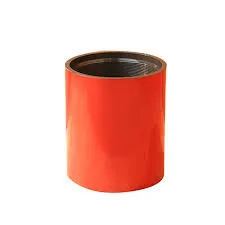- Afrikaans
- Albanian
- Amharic
- Arabic
- Armenian
- Azerbaijani
- Basque
- Belarusian
- Bengali
- Bosnian
- Bulgarian
- Catalan
- Cebuano
- Corsican
- Croatian
- Czech
- Danish
- Dutch
- English
- Esperanto
- Estonian
- Finnish
- French
- Frisian
- Galician
- Georgian
- German
- Greek
- Gujarati
- Haitian Creole
- hausa
- hawaiian
- Hebrew
- Hindi
- Miao
- Hungarian
- Icelandic
- igbo
- Indonesian
- irish
- Italian
- Japanese
- Javanese
- Kannada
- kazakh
- Khmer
- Rwandese
- Korean
- Kurdish
- Kyrgyz
- Lao
- Latin
- Latvian
- Lithuanian
- Luxembourgish
- Macedonian
- Malgashi
- Malay
- Malayalam
- Maltese
- Maori
- Marathi
- Mongolian
- Myanmar
- Nepali
- Norwegian
- Norwegian
- Occitan
- Pashto
- Persian
- Polish
- Portuguese
- Punjabi
- Romanian
- Russian
- Samoan
- Scottish Gaelic
- Serbian
- Sesotho
- Shona
- Sindhi
- Sinhala
- Slovak
- Slovenian
- Somali
- Spanish
- Sundanese
- Swahili
- Swedish
- Tagalog
- Tajik
- Tamil
- Tatar
- Telugu
- Thai
- Turkish
- Turkmen
- Ukrainian
- Urdu
- Uighur
- Uzbek
- Vietnamese
- Welsh
- Bantu
- Yiddish
- Yoruba
- Zulu
Understanding Seating Nipple Design and Its Applications in Various Industries
Understanding the Seating Nipple A Crucial Component in Mechanical Assemblies
In the world of mechanical engineering and assembly, precision is paramount. Every component plays a vital role in ensuring the functionality and durability of the final product. One such often-overlooked component is the seating nipple. While it may not be the most glamorous part of an assembly, its role in ensuring the integrity and proper function of various systems cannot be overstated.
What is a Seating Nipple?
A seating nipple is a mechanical connector typically used in conjunction with other components such as tubes, hoses, or pipes. It serves as a junction point that features a carefully designed seating surface—hence the name—that allows for a tight and leak-proof seal. This seal is essential in various applications, including hydraulic and pneumatic systems, where maintaining pressure is critical for operation.
Seating nipples come in various designs and materials, tailored to meet specific requirements for different environments. Common materials include stainless steel, brass, and plastic, each offering distinct advantages in terms of strength, corrosion resistance, or weight. The choice of material often depends on the application, as some environments may expose components to harsh chemicals or extreme temperatures.
Importance of Proper Design
The design of a seating nipple is critical. Achieving the right balance between strength and flexibility is essential for accommodating thermal expansion and contraction, vibrations, and other forces that the assembly may encounter during its lifecycle. Engineers pay close attention to the dimensions and angles involved, as even a slight deviation can lead to catastrophic failure.
Seating nipples are engineered to facilitate easy installation and disassembly. Their design often includes features that guide the hose or pipe into position, ensuring that the connection is made correctly without the need for excessive force or complicated tools. This user-friendly aspect simplifies maintenance and reduces downtime, which is vital in industrial settings where efficiency is key.
seating nipple

Applications in Various Industries
Seating nipples are utilized across a broad range of industries, from automotive and aerospace to construction and manufacturing. In hydraulic systems found in vehicles, seating nipples ensure that fluid flows efficiently and without leakage, which is critical for brake systems and steering controls. Similarly, in pneumatic applications, they play a role in air compression systems, successfully maintaining pressure and efficiency.
In construction, these connectors are often used in concrete formwork systems, helping to secure pipes or rebar within forms. They also appear in HVAC systems, where they allow for the smooth passage of refrigerants and air, contributing to the overall efficiency of heating and cooling systems.
Challenges and Innovations
Despite their importance, seating nipples face challenges like any other mechanical component. Over time, seals can wear out, leading to leaks that may compromise the entire system's integrity. Regular maintenance and inspections are essential to ensure that these components continue to function effectively.
Innovation in materials science and engineering design is ongoing. New materials that offer greater durability and resistance to wear are being developed, and advancements in manufacturing techniques such as 3D printing are promising to create even more complex and effective designs. These innovations may lead to seating nipples that are lighter, stronger, and more adaptable to a range of conditions.
Conclusion
The role of the seating nipple in mechanical assemblies is one that deserves attention and respect. From enhancing the performance of hydraulic systems to ensuring efficient operation in HVAC setups, these small yet mighty components are integral to the success of a multitude of applications. Understanding their function and importance can lead to better design, maintenance, and innovation in a range of fields. As technology advances, we can expect to see even smarter and more efficient seating nipples, helping to pave the way for the next generation of mechanical systems.
-
Tubing Pup Joints: Essential Components for Oil and Gas OperationsNewsJul.10,2025
-
Pup Joints: Essential Components for Reliable Drilling OperationsNewsJul.10,2025
-
Pipe Couplings: Connecting Your World EfficientlyNewsJul.10,2025
-
Mastering Oilfield Operations with Quality Tubing and CasingNewsJul.10,2025
-
High-Quality Casing Couplings for Every NeedNewsJul.10,2025
-
Boost Your Drilling Efficiency with Premium Crossover Tools & Seating NipplesNewsJul.10,2025







